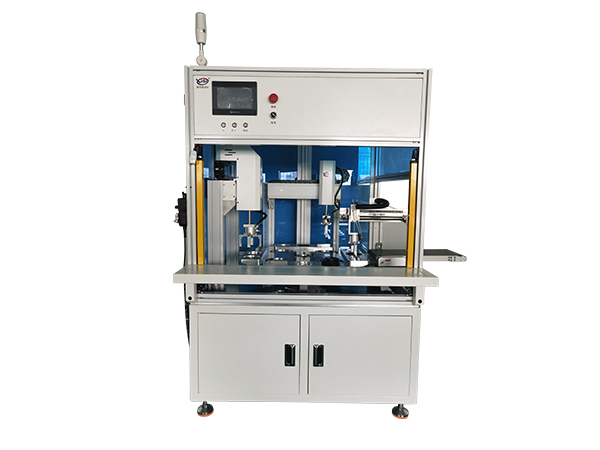Non-standard automatic lines (non-standard automated production lines) are automated production systems custom-developed based on the specific production needs of enterprises. Their core function lies in solving complex production problems that traditional standardized equipment cannot meet through highly customized design, thereby enhancing production efficiency, quality and flexibility. The following is an analysis of its specific functions and values
I. Core Role
Meet personalized production demands
Customized design: Non-standard automatic lines can design dedicated tooling fixtures, conveying systems and assembly processes for the special structures of products (such as irregular-shaped parts and complex assembly processes). For instance, in the production of automotive parts, non-standard lines can integrate multiple processes such as welding, painting, and inspection to meet the differentiated demands of different vehicle models.
Multi-model compatibility: Through modular design (such as replaceable fixtures and quick-change mechanisms), one production line can be compatible with the production of multiple products, reducing equipment idleness rates. For instance, in the 3C electronics industry, non-standard lines can be quickly switched to the assembly of products such as mobile phones and tablets by adjusting the program of the robotic arm.
Enhance production efficiency and capacity
Automated continuous operation: Non-standard line integrated feeding, processing, inspection, packaging and other full processes, achieving 24-hour uninterrupted production. For instance, after a certain home appliance enterprise introduced non-standard lines, the assembly efficiency of air conditioner compressors increased from 500 units per day to 2,000 units per day.
Parallel process optimization: By conducting synchronous operations at multiple workstations (such as double-station welding and triple-station inspection), the production cycle of a single piece is shortened. For instance, the non-standard line of a certain medical device has reduced the assembly time from 120 seconds per piece to 45 seconds per piece.

Ensure the consistency of product quality
Precision control: Non-standard line integrated high-precision sensors (such as laser displacement sensors, torque sensors) and visual inspection systems are used to monitor processing parameters (such as temperature, pressure, and position) in real time to ensure that the products meet standards. For instance, the non-standard lines in semiconductor packaging are visually inspected to keep the chip placement deviation within ±2μm.
Data traceability: Integrate the MES system to record the production data of each process (such as operators, time, parameters), achieving quality traceability and process optimization. For instance, a certain auto parts manufacturer reduced the defective product rate from 1.2% to 0.3% through non-standard line data.
Reduce production costs
Reduce reliance on manual labor: Automated operations replace manual operations, lowering labor costs. For instance, a certain electronics factory reduced the number of workers in the non-standard line assembly process from 50 to 8, saving over 3 million yuan in labor costs annually.
Reduce material waste: By means of precise feeding systems (such as vibrating discs, servo motor control) and waste recycling devices, the loss of raw materials is reduced. For instance, a certain packaging enterprise has reduced the waste rate of label application from 5% to 0.5%.
Ii. Industry Application Value
The automotive manufacturing industry
Flexible production: Non-standard lines can be quickly adjusted to adapt to the production of core components such as engines and gearboxes for different vehicle models. For example, the Tesla Shanghai factory achieves co-production of Model 3/Y through non-standard lines, and the model change time only takes 2 hours.
Precision assembly: Integrating functions such as torque control and clearance detection, it ensures the assembly accuracy of automotive parts (such as engine piston clearance ≤0.02mm).
3C electronics industry
Miniaturized production: For micro products such as mobile phones and wearable devices, non-standard lines are designed with micro fixtures and precise positioning systems to achieve assembly accuracy at the 0.1mm level.
High-speed production: Through multi-axis robotic arms and high-speed conveyor belts, the high-speed placement requirements of electronic components are met (such as SMT placement machines with a speed of up to 80,000 pieces per hour).
Medical equipment industry
Aseptic production: Non-standard lines adopt a closed design, cleanroom standards and ultraviolet disinfection devices to meet the aseptic requirements of medical devices.
High reliability testing: Integrated leakage testing, electrical safety testing and other modules ensure that the product complies with medical certification standards (such as ISO 13485).
New energy industry
Battery module production: Non-standard line integrated cell stacking, welding, insulation testing and other processes are carried out to achieve automated production of battery modules (for example, the module line efficiency of CATL reaches 12PPM).
Photovoltaic module production: Through non-standard lines, the entire process of silicon wafer cleaning, string welding, lamination, etc. is automated to enhance the conversion efficiency of photovoltaic modules.
Iii. Technological Advantages and Trends
Intelligent upgrade
Integrating AI visual inspection, adaptive control and other technologies, the equipment can independently adjust parameters (such as automatically adjusting the welding current according to the hardness of the material).
By simulating the production process through digital twin technology, the process route can be optimized in advance to reduce the cost of trial and error.
Flexible development
It adopts a modular design (such as movable workstations and quick mold changing devices), supporting small-batch and multi-variety production modes.
Combine AGV (Automated Guided Vehicle) to achieve automatic material delivery and enhance the flexibility of the production line.
Green manufacturing
Reduce energy consumption through energy-saving motors and energy recovery systems (for example, the energy consumption of a certain non-standard line is reduced by 30%).
Adopt environmentally friendly materials (such as degradable lubricating oil) and waste material classification and recycling devices to reduce environmental pollution.
about
Introduction video case honor partners factoryproduct
Automatic welding line Non-standard customization Automatic soldering Glue/screw lockingnews
dynamic Information faqCustomer Service
contactMr. Xia:+86 186-7696-3763

WeChat QR code

Douyin QR Code
Copyright © 2025 Copyright © Dongguan Chuangxiao Automation Technology Co., Ltd.
本站相关网页素材及相关资源均来源互联网,如有侵权请速告知,我们将会在24小时内删除